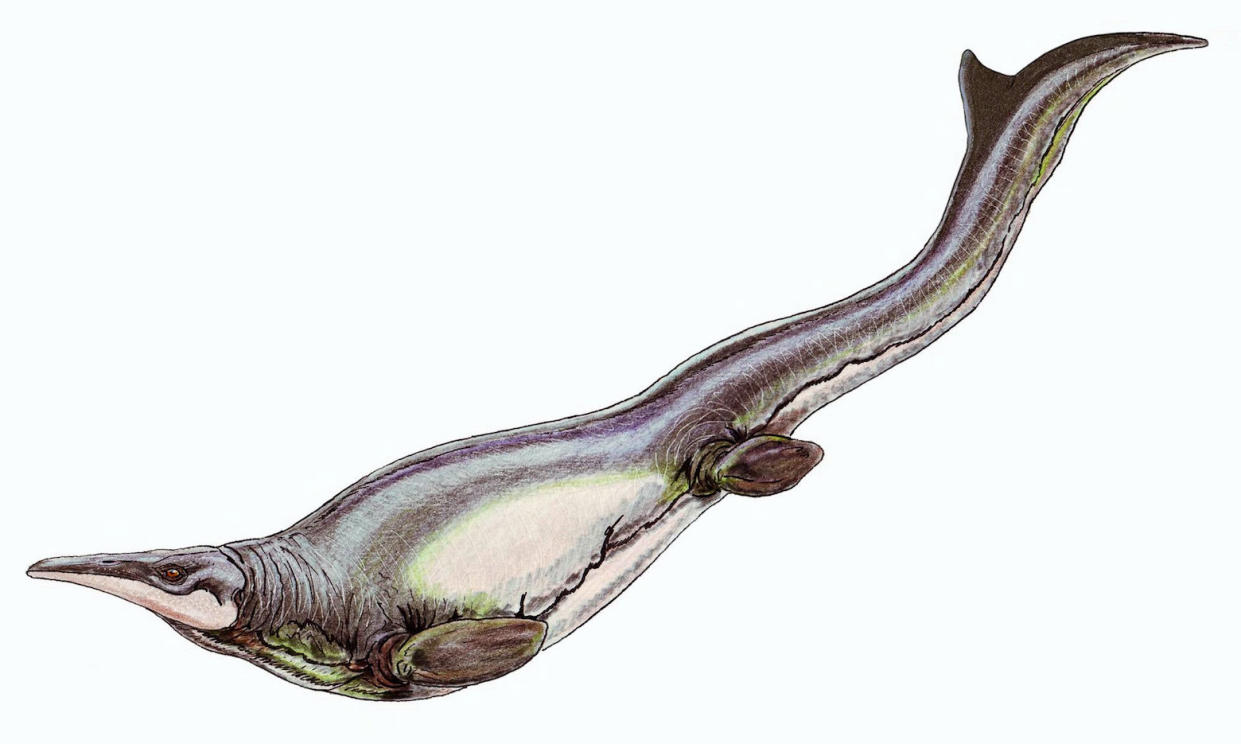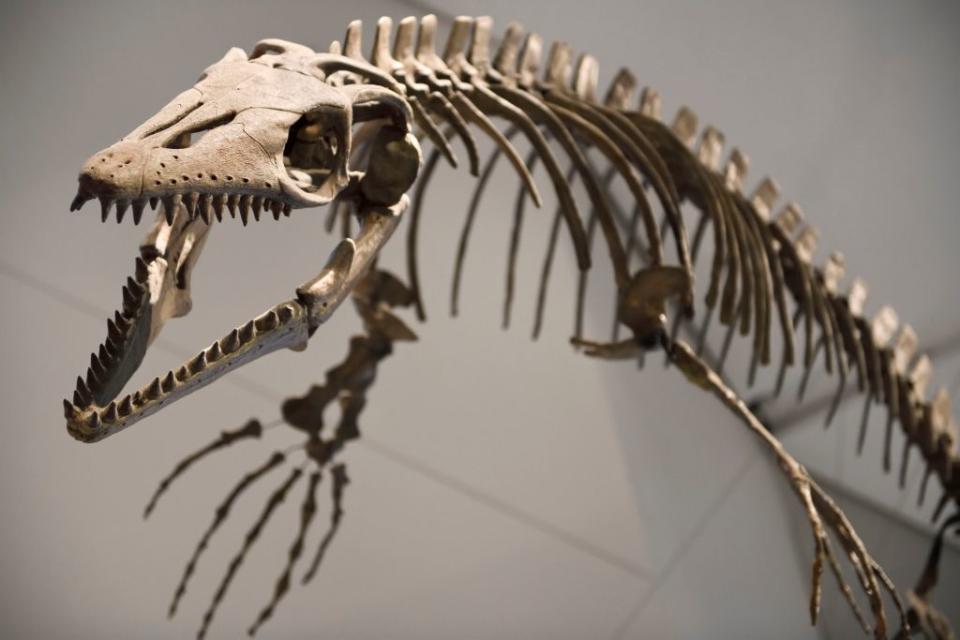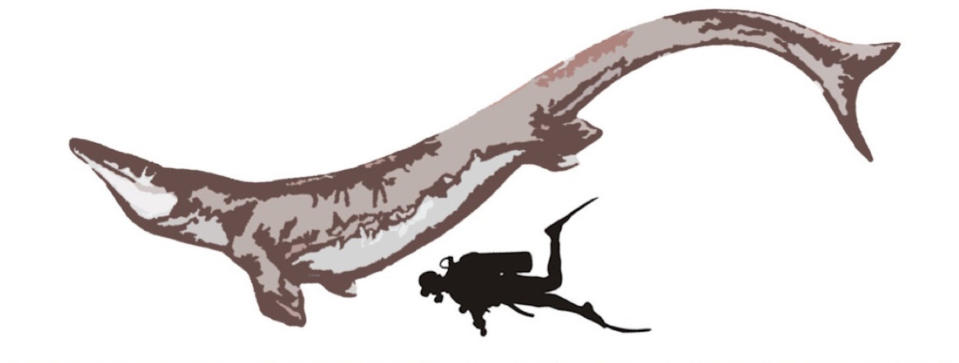50ft long Cretaceous marine reptile was able to kill its prey while doing breaststroke, say scientists

Just when you thought it was safe to go back into the water… along swims a 50ft-long reptile with huge teeth - that could do the breaststroke.
Scientists believe one of the scariest monsters to ever roam the seas was capable of performing the popular swimming style while it hunted.
Mosasaurs, which became extinct at the end of the Cretaceous period 66 million years ago, had huge teeth and powerful jaws to shred their prey.
And researchers claim they did it by performing the breaststroke.
A team at the University of Southern California (USC) examined the fossil Plotosaurus - a type of mosasaur which measured up to 42ft (13m) - at the Natural History Museum in Los Angeles County.

The largest known mosasaur species, Mosasaurus hoffmannii, may have reached lengths of up to 56ft (17m), scientists estimate.
The mosasaur had a muscular breaststroke that helped them ambush their prey with side bursts of speed, researchers said.
"We know that mosasaurs most likely used their tails for locomotion,” said the study’s lead author, Kiersten Formoso, a PhD student in vertebrate paleontology at the University of Southern California).
“Now we think that they also used their forelimbs, or their tail and forelimbs together.
"Mosasaurs swam unlike anything else."
Read more
Reckless driver who led police on 100mph car chase foiled by McDonald's wrappers
I'll drink to that! German court rules that hangovers are officially an 'illness'
Boris Johnson loses ruling after Supreme Court finds suspension of Parliament was unlawful
She said this dual swimming style would make mosasaurs unique among all tetrapods (four-limbed creatures), living or extinct.
Previous studies had noted the creature’s unusually large chest, but assumed it primarily relied on its long tail to swim, like alligators or whales. This is known as “cruising”, as opposed to the “burst” motion of a breaststroke.
"Like anything that swims or flies, the laws of fluid dynamics mean that burst versus cruising is a trade-off," said study co-author Dr Mike Habib, assistant professor of anatomical sciences at USC.
"Not many animals are good at both."

By studying the Plotosaurus fossil, alongside pectoral measurements from other studies, they found that mosasaurs were capable of the breaststroke.
The research has not yet been peer-reviewed but Ms Formoso presented the findings at the Geological Society of America's annual meeting earlier this week.
The largest Mosasaur skeleton on display, nicknamed ‘Bruce’, can be seen at the Canadian Fossil Discovery Centre in Manitoba, Canada. It is about 43ft (more than 13m) long.

 Yahoo News
Yahoo News 

